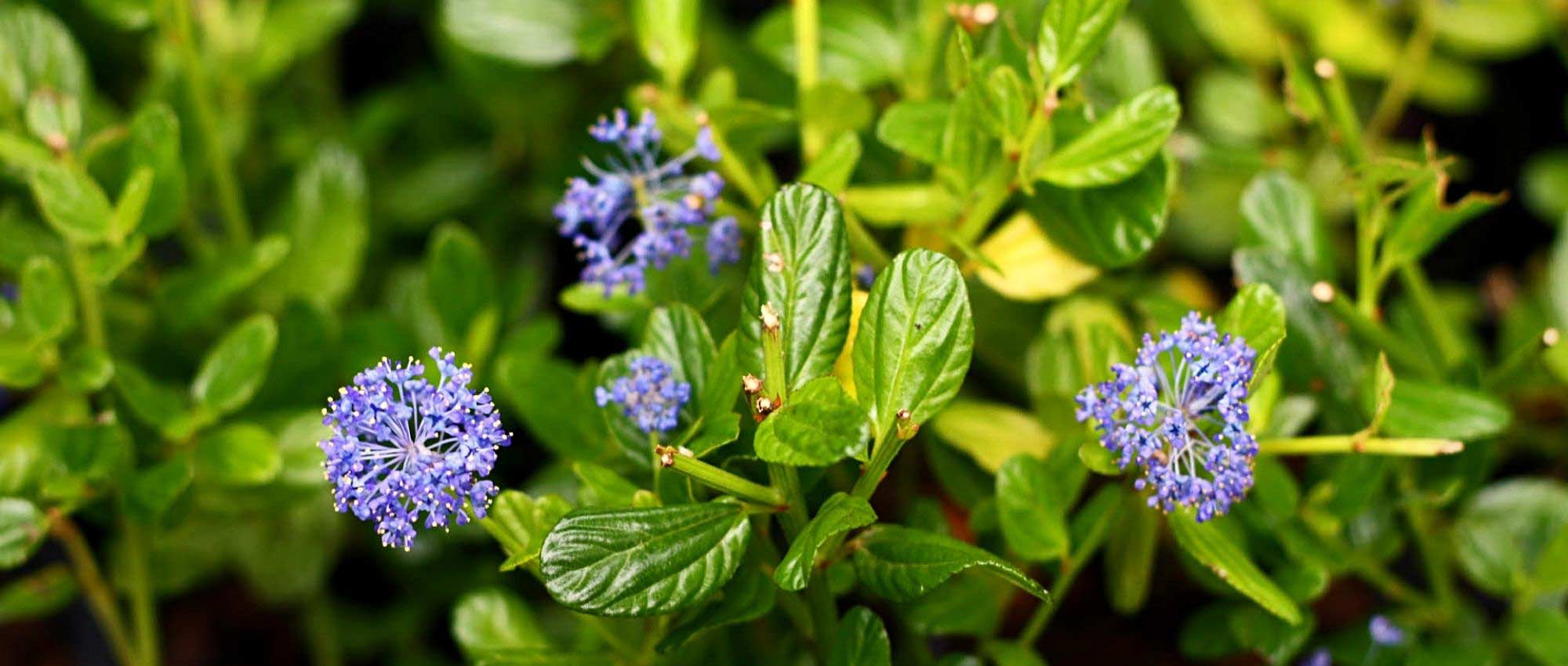
10 evergreen bushes for dry soil
Discover our selection!
Contents
By retaining their leaves in winter, evergreen bushes have the advantage of being decorative all year round. This is a real asset when used as a privacy hedge. Thus they do not lose any of their screening power, even in the off-season. Some are also perfectly tolerant of dry soils. They are undemanding and you can easily grow them even if your garden soil tends to dry out quickly. Discover our selection of evergreen bushes that tolerate dry soils, and all our tips to grow them!
Oleander
Oleander, or Nerium oleander, is a typically Mediterranean bush that offers abundant flowering throughout summer, from June to September. Flowers are often pink, sometimes red, white, even orange or pale yellow, depending on variety. They are formed of five large petals, fused at the base into a tube. There are even double-flowered varieties! Oleander also bears attractive elongated dark green leaves with a clearly marked central vein. At ripeness, it reaches 3 to 4 metres in height. We recommend planting it in full sun, in a sheltered spot protected from cold winds. Depending on variety, it tolerates between −7 and −15 °C. It is an essential plant in a Mediterranean-style garden, and it is perfect by the sea. It is ideal for planting as a hedge.
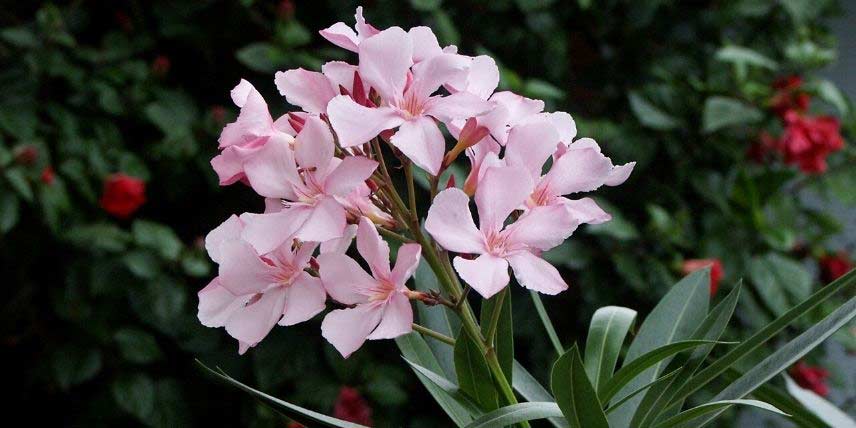
Delicate flowering of oleander, Nerium oleander (photo Ian W. Fieggen)
Read also
Be attentive to evergreen bushesRockrose
Cistus is a Mediterranean floriferous bush, which generally produces beautiful crumpled-looking flowers from April to June. They are usually pink or white, with a cluster of yellow stamens at the centre, and some varieties bear striking dark macules towards the centre of the flower. Although short-lived, Cistus flowers are continually renewed. Its leaves are thick, sometimes corrugated or rough, and often green–grey in colour. It is an undemanding bush and not very susceptible to disease. It nevertheless needs a warm, sunny position and is better suited to mild climates where risk of frost is low. Ideal bush for a seaside garden!
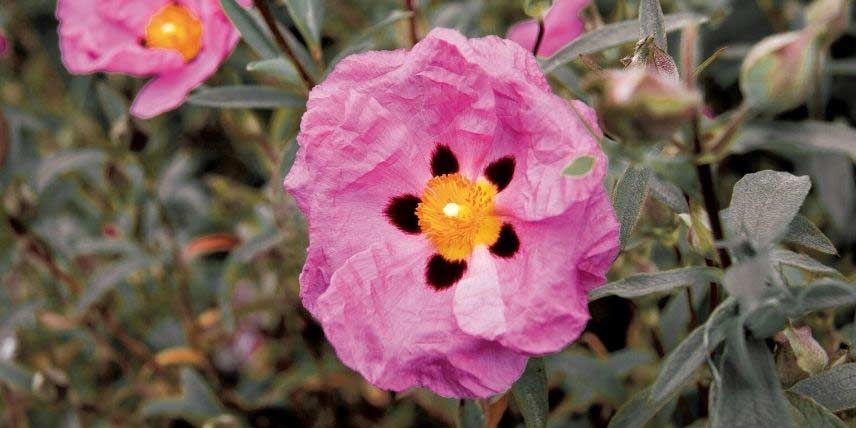
Cistus purpureus produces beautiful pink flowers, spotted with dark macules and with a crumpled appearance
Discover other Evergreen shrubs
View all →Available in 0 sizes
Available in 1 sizes
Available in 1 sizes
Available in 1 sizes
Available in 1 sizes
Available in 1 sizes
Available in 1 sizes
Available in 1 sizes
Available in 2 sizes
Available in 1 sizes
Teucrium fruticans
Tree germander, or Teucrium fruticans, is a small bush, which does not exceed 1.50 m in height, with a rounded habit, well bushy and ramified. It bears handsome ovate leaves covered with silvery-grey down. They are slightly aromatic when crushed. It produces small blue flowers throughout summer (sometimes even from winter in regions with mild climate). As Teucrium tolerates pruning very well, it is a bush that can easily be trained as topiary, like box! We advise pruning it just after flowering to encourage it to branch and develop a dense habit. It tolerates short frosts down to –10 °C, and proves perfect by the sea or in a Mediterranean-style garden.
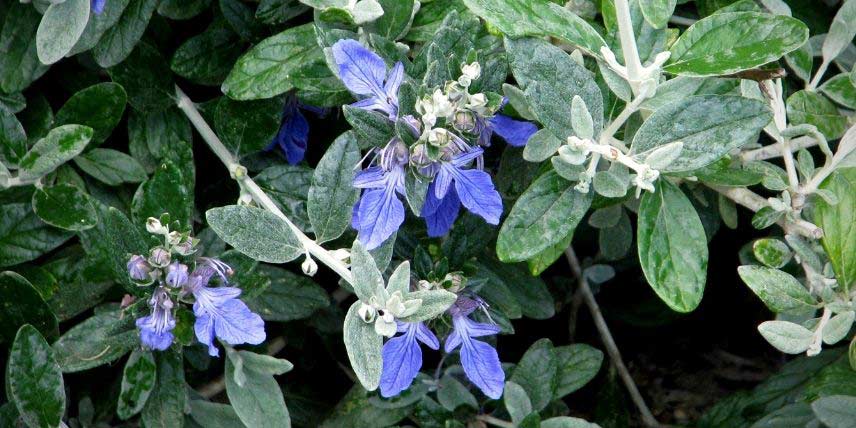
Small blue flowers and silvery-green foliage of Tree germander, Teucrium fruticans ‘Azureum’ (photo peganum)
Read also
10 evergreen shrubs for coastal gardensElaeagnus ebbingei
Also called Chalef, Elaeagnus ebbingei is a dense, compact bush, which bears elliptical, thick leaves. In the typical species, young leaves are silvery grey before turning dark green, but variegated varieties also exist: for example ‘Limelight’, with green and yellow leaves that are very bright. Elaeagnus produces in autumn a scented flowering in the form of small cream-coloured bell-shaped flowers with four petals. This flowering is nectariferous, attracting pollinating insects. Flowers are then followed by small berries. Elaeagnus grows quickly, reaching up to three or four metres in height at ripeness. It is ideal for forming a hedge, especially as it tolerates pruning well, and forms an effective windbreak. If you plant it as a hedge, leave at least 80 cm between two plants. It truly is an easy-to-grow bush, very hardy and undemanding. Moreover, it tolerates sea spray and can therefore be planted by the seaside.

Green, thick leaves of Elaeagnus ebbingei
Ceanothus impressus
Ceanothus impressus, charmingly nicknamed California lilac, is a bush prized for its beautiful blue–mauve flowering, which literally covers the foliage! Flowers are small but numerous, and are gathered in rounded panicles. Flowering occurs in spring, in April–May, and can extend into summer or autumn depending on the climate. We particularly recommend variety ‘Victoria’. Ceanothus impressus forms a bush with a dense, rounded habit, reaching up to two metres in all directions. Its leaves are small, glossy dark green, and dentate. There are also variegated varieties, such as Ceanothus impressus ‘Lemon & Lime’. Ceanothus thrives in full sun and well-draining, rather poor soil. It is well suited to seaside gardens. It tolerates pruning very well, and is hardy down to −10 °C. It
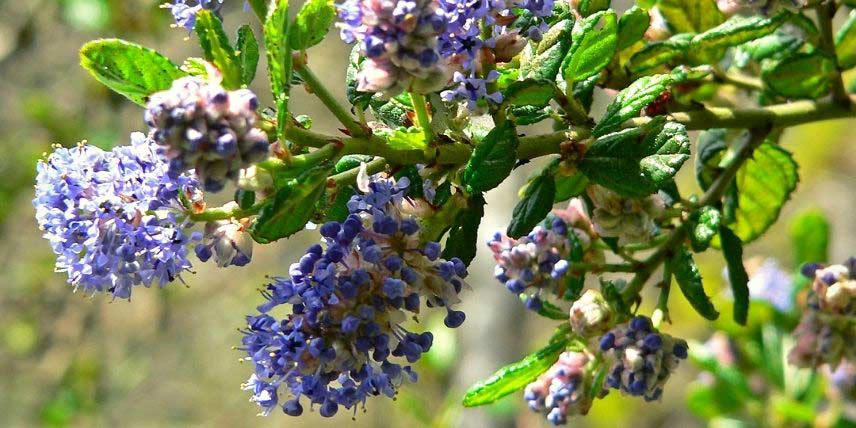
Ceanothus impressus var. nipomensis offers beautiful blue-mauve flowers, gathered in rounded panicles (photo Stan Shebs)
Phillyrea angustifolia
Narrow-leaved mock privet, or Phillyrea angustifolia, is a bush naturally found in garrigues of the Mediterranean Basin and south-west France, often alongside holm oak. It bears dark green, leathery, long, narrow leaves reminiscent of olive leaves… It even belongs to the same family! It therefore makes a good alternative to olive trees. In spring it also bears small greenish-white flowers that are rather inconspicuous but pleasantly scented and melliferous. They are followed by small bluish-black berries that resemble olives but are not edible. The mock privet is a slow-growing bush with great longevity. At maturity it reaches up to 3 metres in height with a spread of 2 metres. Plant in sun or partial shade. It is an easy, undemanding bush that adapts well to poor, rocky soils and tolerates calcareous soils. When young it can be somewhat tender, but once established it can withstand down to −15 °C. It also tolerates sea spray and can be planted by the seashore.
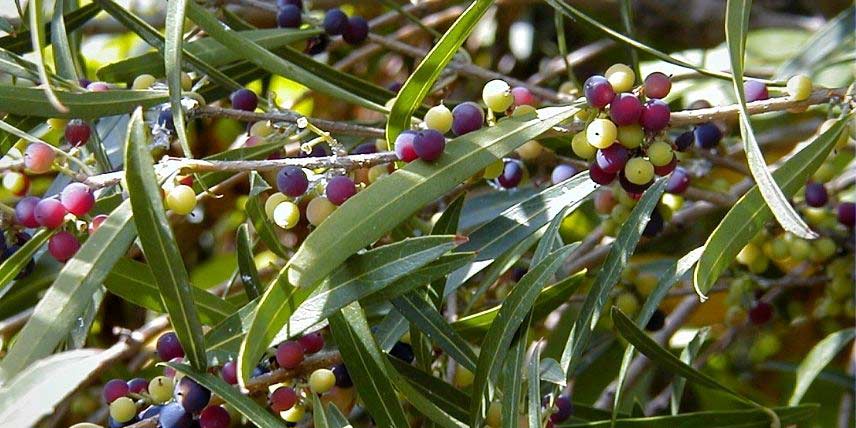
Phillyrea angustifolia has fine foliage reminiscent of olive leaves, as well as rounded berries (photo A. Barra)
Pittosporum tobira
Japanese Pittosporum is a compact bush bearing beautiful glossy green leaves, obovate in shape and leathery. Central vein is well defined and paler in colour. Variety Pittosporum tobira ‘Variegatum’ stands out for its distinctive leaves, green marginate with white. Pittosporum also offers cream-white bouquets of flowers in spring, formed of five petals, whose scent is reminiscent of orange blossom. At ripeness this bush can reach up to five metres in height and two metres in spread. There is however a dwarf variety: Pittosporum tobira ‘Nanum’ (up to one metre tall). Pittosporum is not very hardy (down to −5 °C): better to reserve it for regions with a mild climate, where risk of frost is low. In other regions it is preferable to to grow in a pot and bring it in for winter. Apart from this sensitivity to cold, Pittosporum is a resilient and easy-to-live bush. Wind and sea spray do not bother it… thus it can be planted without problem in a seaside garden. It tolerates pruning without problem, making it an ideal bush for hedging, but it can also be grown as a specimen or combined with other bushes.
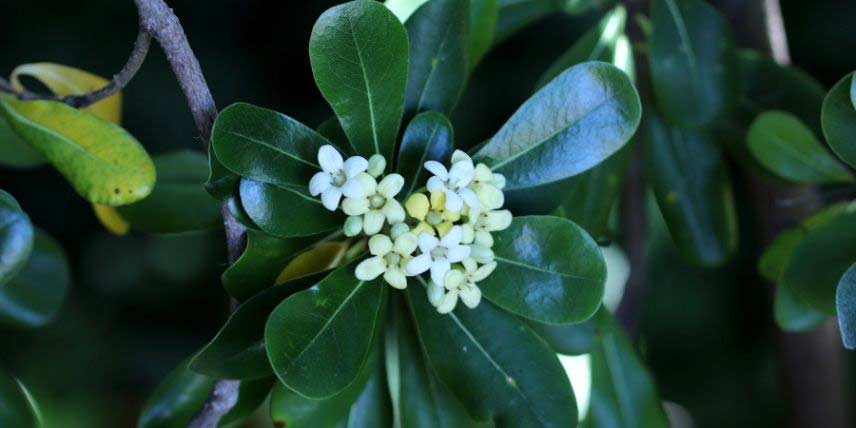
Pittosporum tobira is appreciated for its cream-white flowering and its thick, glossy green foliage
Rhamnus alaternus
Typical of Mediterranean garrigues, Nerprun alaterne is a bush quite bushy, bearing leathery, dark green leaves. It also offers a discreet flowering in spring. Its flowers are small, yellowish-green and melliferous, favoured by bees that come to forage. They are followed, on female plants, by small red berries, eaten by birds. Nerprun alaterne is a very easy and undemanding bush, which adapts to any type of soil, even calcareous, poor, clayey or rocky. It even tolerates sea spray and air pollution. It is tolerant regarding exposure, growing as well in sun as in shade… a true all-terrain bush! Moreover, it requires little maintenance, grows quickly, and can reach up to five metres in height at ripeness.
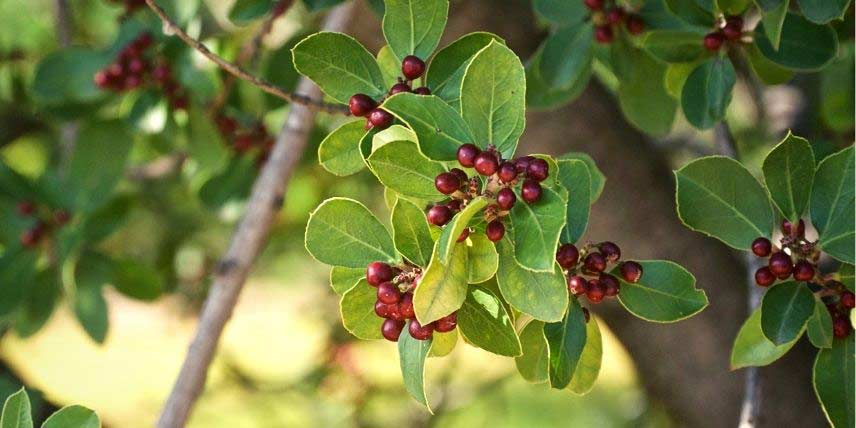
Female young plants of Nerprun alaterne bear red berries, very decorative (photo Colsu)
Myrtus communis
Myrtle is a typically Mediterranean bush whose splendid flowering is appreciated throughout summer, from July to September, splendid flowering. It bears lovely immaculate white flowers, with numerous long stamens at the centre that are highly decorative. Its flowering is truly light and delicate! Flowers are followed by berries, which are used in jams or jellies. This bush is slow-growing and reaches 1.5 to 2 m tall. It has small ovate leaves, dark green, glossy and thick. They are aromatic and have medicinal properties. You can plant it in sun or shade. Regarding its hardiness, Myrtle tolerates down to -12°C.
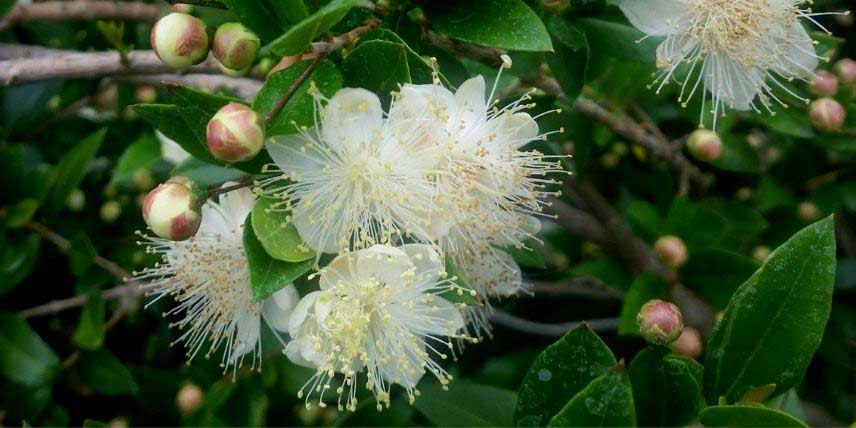
Splendid white flowering of Myrtus communis, with numerous highly decorative stamens (photo Jonathan Billinger)
Pistacia lentiscus
Pistacia lentiscus, mastic tree is a bush of Mediterranean garrigues and scrub vegetation offering superb foliage, divided into fine leaflets. Moreover, its leaves take on beautiful bronze tones in winter. It is a dioecious bush: male and female young plants occur. Pistacia lentiscus flowers in spring, but flowers are very discreet and insignificant. On female young plants, these are followed by clusters of small red berries, later turning black. It grows fairly slowly and often adopts a spreading habit, a little wider than tall: it reaches up to two metres high for three metres in spread. Pistacia lentiscus also has the particularity of producing an aromatic resin, used for its antiseptic properties. Regarding exposure, it tolerates both sun and shade! Very undemanding and easy to grow, Pistacia lentiscus is an all-purpose bush that readily accepts poor soils, wind and sea spray.
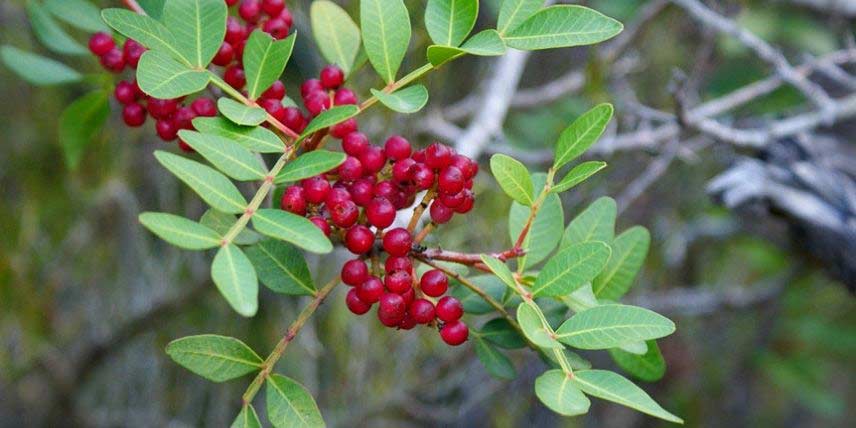
Female young plants of Pistacia lentiscus bear red berries! (photo Michael Wunderli)
- Subscribe!
- Contents
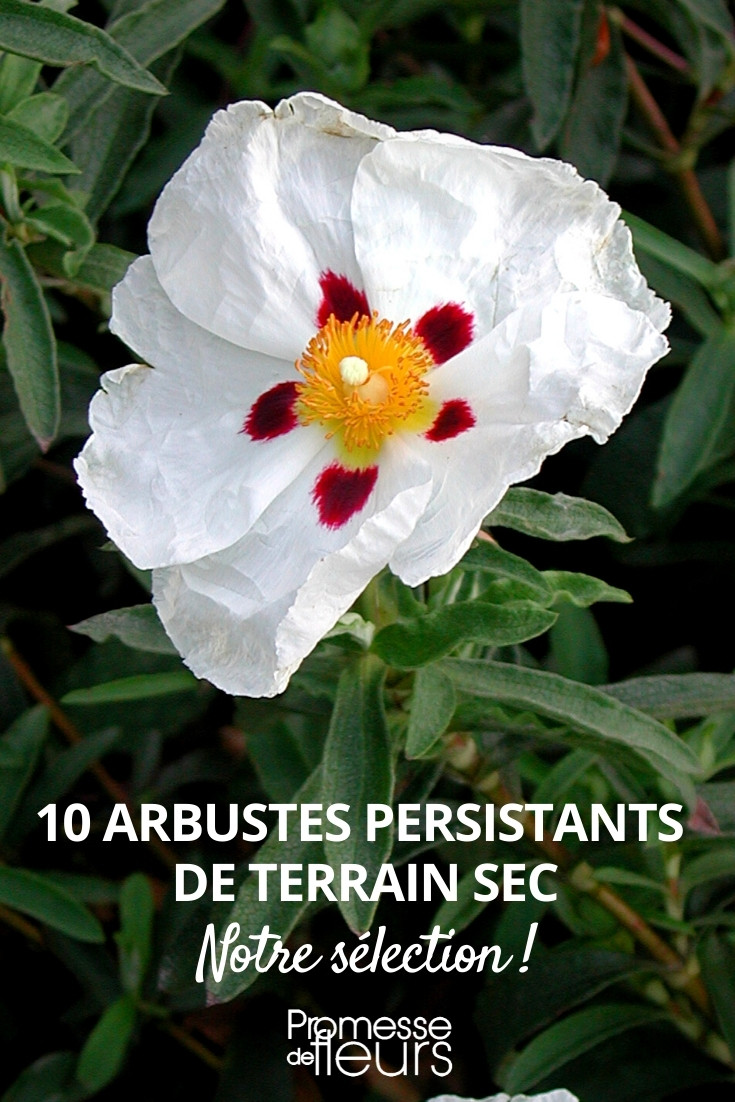



































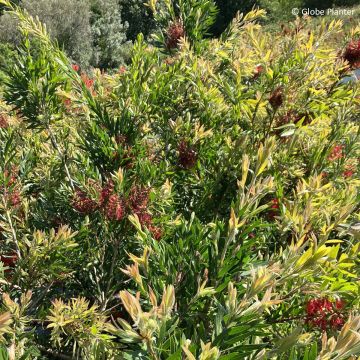
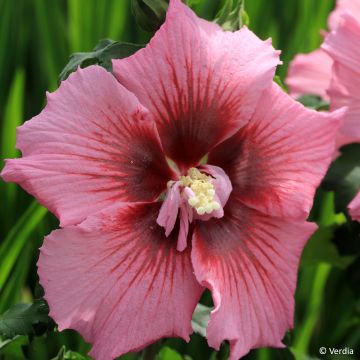
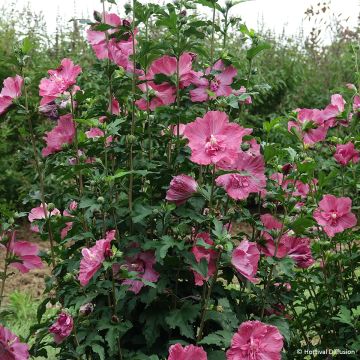


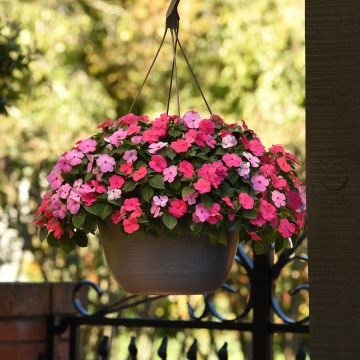
Comments